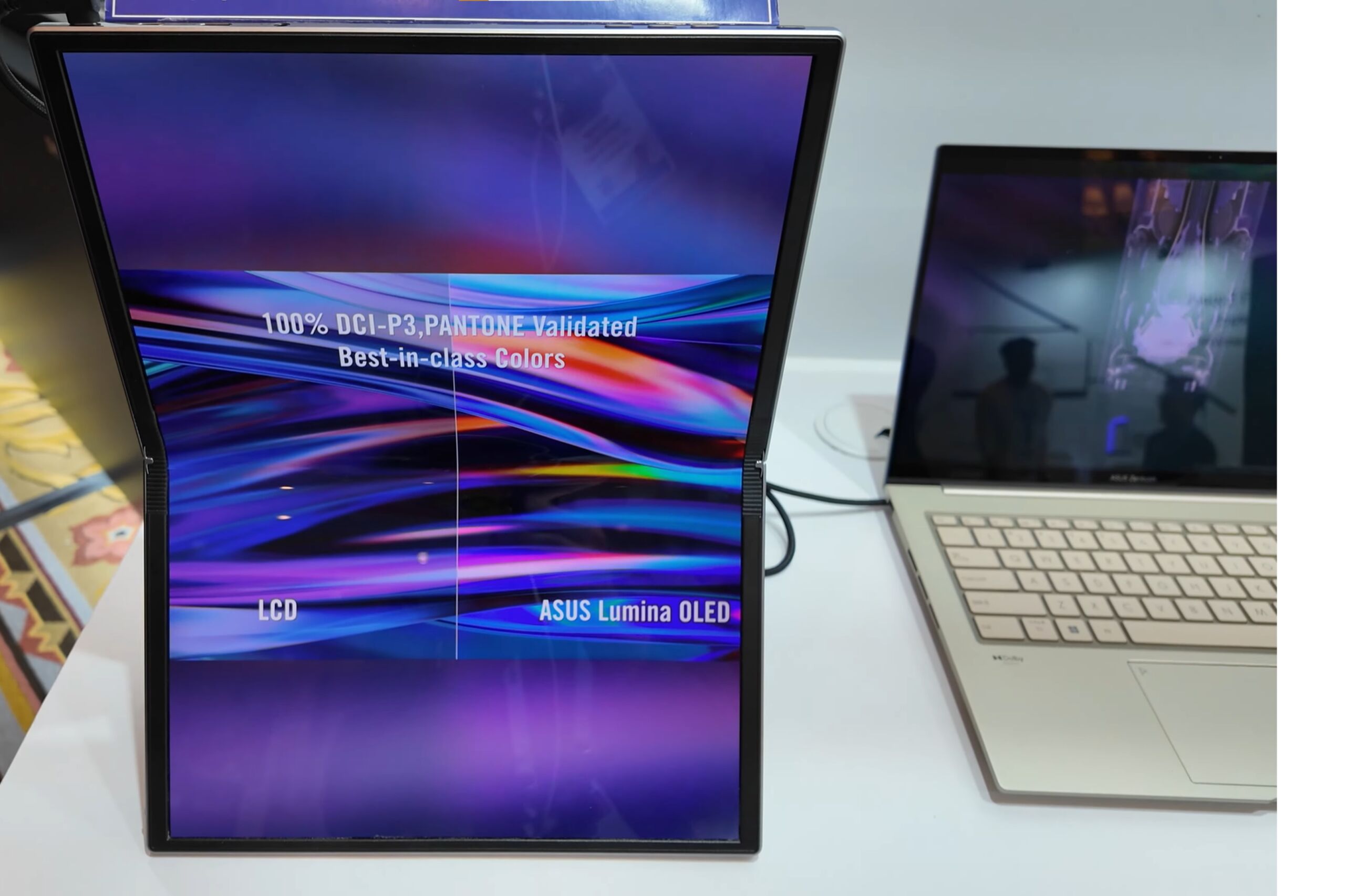
Asus plans to release this foldable OLED monitor in 2024. Electronics retailer Abt Electronics captured footage of it on display at CES.
Abt Electronics/YouTube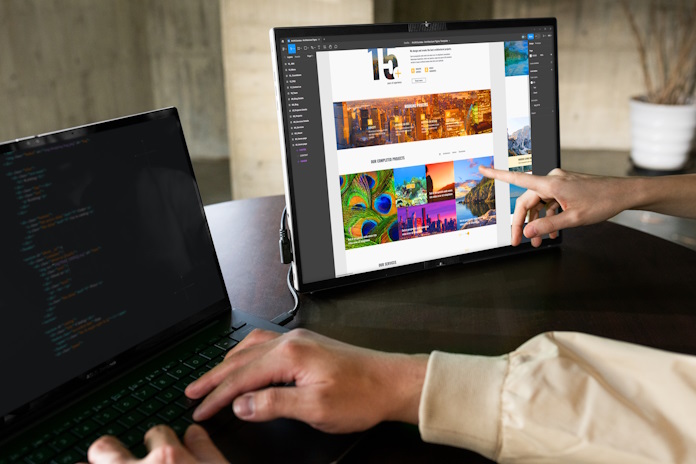
The monitor has a metal chassis and glossy coating.
Asus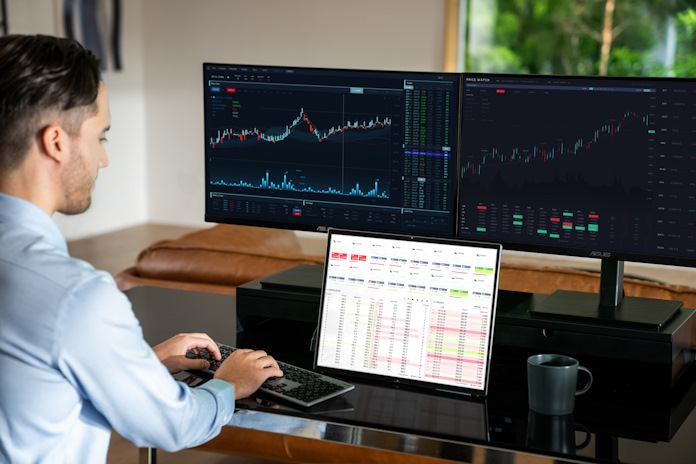
The monitor could help workers quickly add more screen space to setups.
Asus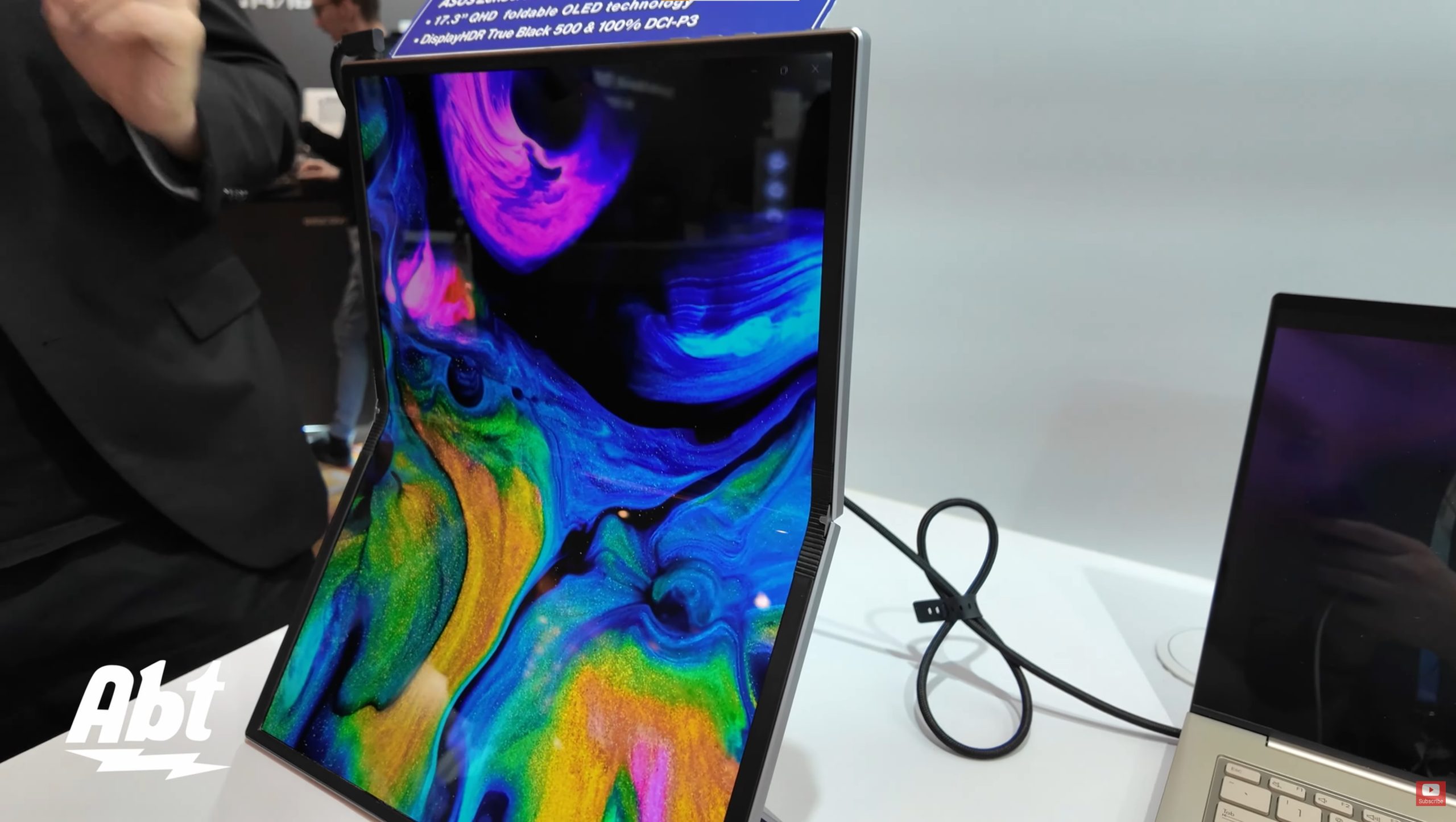
In its video, Abt Electronics showed off different angled views of the monitor.
Abt Electronics/YouTube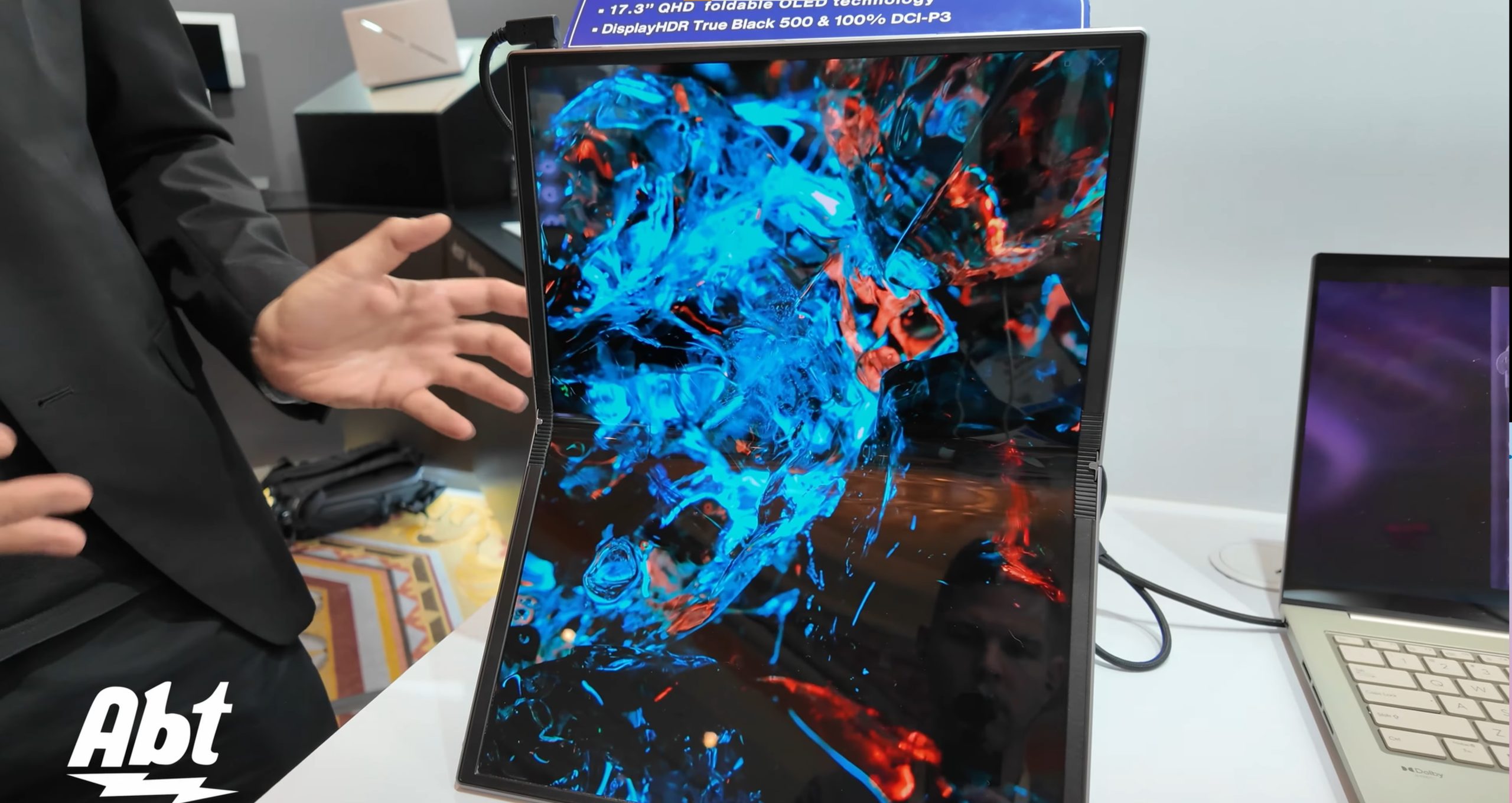
Like other foldables, the crease can seemingly catch reflections and glare when the device is bent.
Abt Electronics/YouTube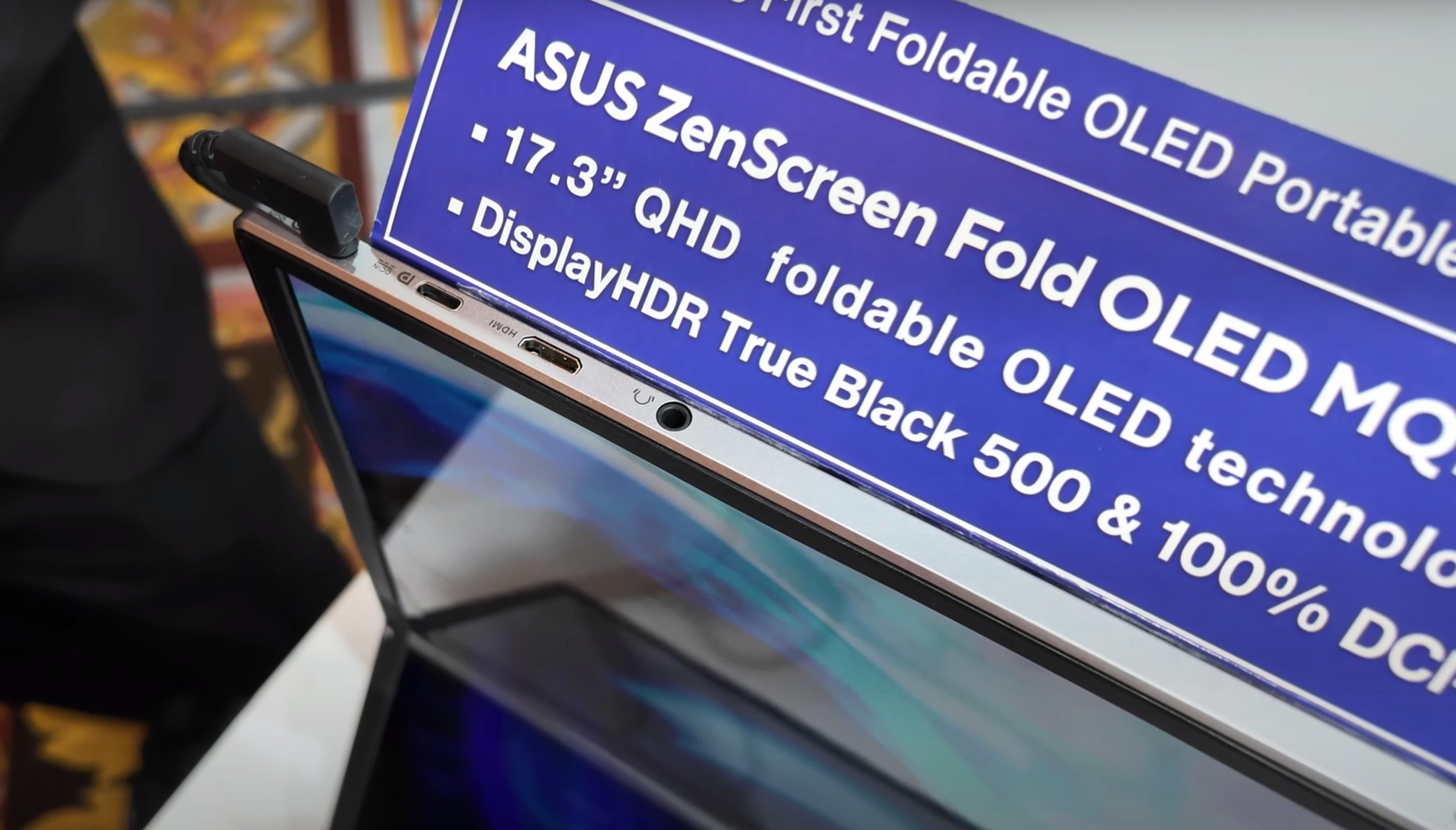
Port selection.
Abt Electronics/YouTube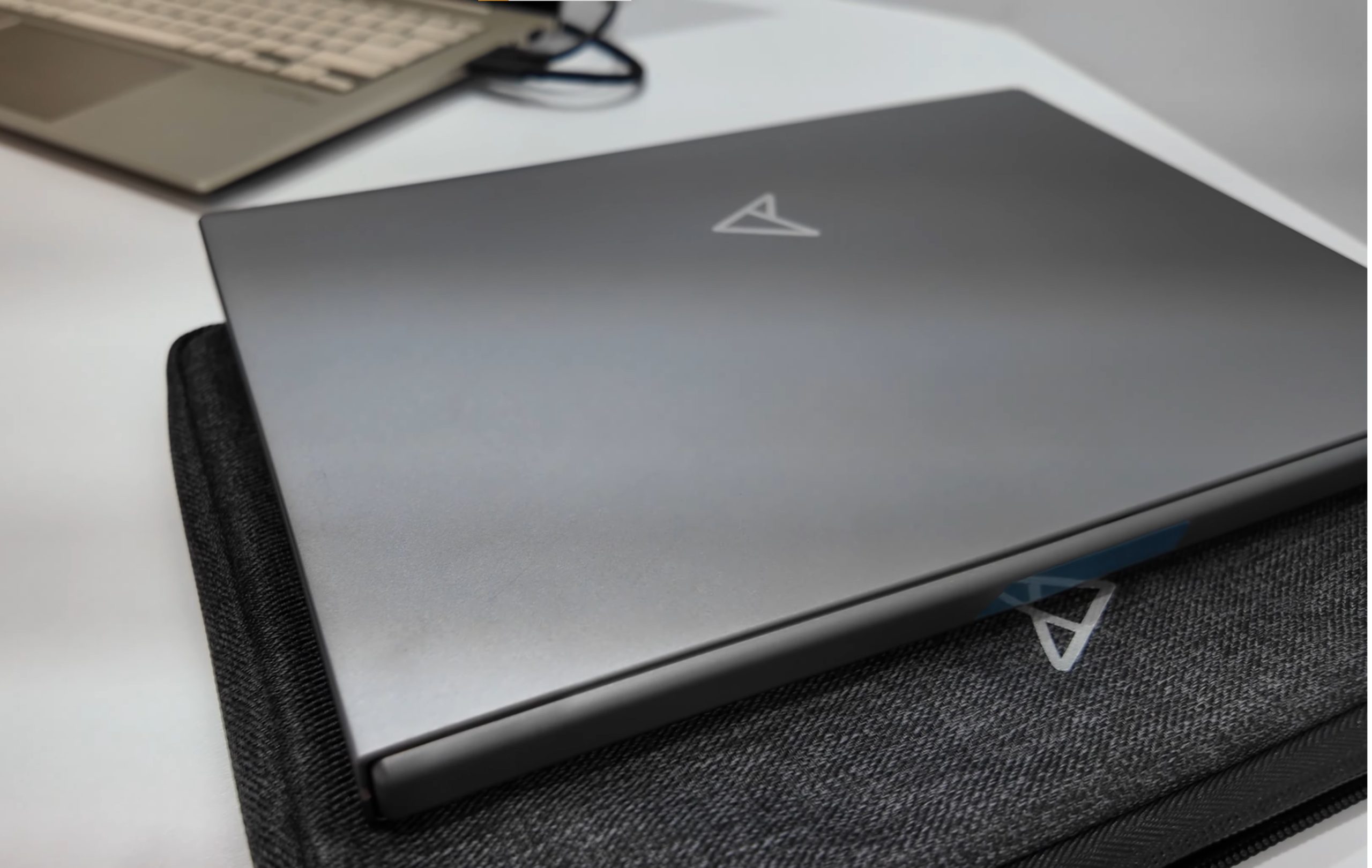
The portable monitor will come with a sleeve.
Abt Electronics/YouTube
Foldable screens have been bending their way into consumer gadgets over the last few years. But with skepticism about durability, pricing, image quality, and the necessity of such devices, foldable screens aren’t mainstream. With those concerns in mind, I haven’t had much interest in owning a foldable-screen gadget, even after using a foldable laptop for a month. However, the foldable portable monitor that Asus is showing at CES in Las Vegas this week is an application of foldable OLED that makes more sense to me than others.
Asus’ ZenScreen Fold OLED MQ17QH announced on Tuesday is a 17.3-inch portable monitor that can fold to a 12.5-inch size. The monitor has 2560×1920 pixels for a pixel density of 184.97 pixels per inch. Other specs include a 100 percent DCI-P3 coverage claim and VESA DisplayHDR True Black 500 certification.
When I think of the ways I use portable monitors, foldability makes more sense than it does with other device types. For example, I love working outside when possible, and an extra 17.3-inch screen that’s easy to carry would make long work sessions with an ultraportable laptop more feasible. The Fold OLED’s 17.3 inches is near the larger size for a portable monitor, but the fold and comparatively light weight should make it feel more transportable than similarly sized monitors that don’t fold in half.
Regarding dimensions and weight, Asus compares the monitor to a 13-inch thin-and-light laptop. The monitor weighs 2.58 lbs—that’s notable heft for something meant to be lugged around (the smaller Lenovo ThinkVision M14 weighs 1.3 pounds, for comparison). But 2.58 lbs is still on the lighter side for a 17-inch-class monitor (Asus’ 17-inch ROG Strix XG17AHP is 3.88 lbs), and Asus’ foldable is similarly thin.
Asus credits a “waterdrop-style hinge” for the monitor’s thin size. It’s 0.38 inches (9.7 mm) thick when unfolded, which should translate to about 0.76 inches (19.4 mm) when the monitor is folded shut.
It feels more natural for a portable monitor to add a fold for easy transport, since portability is right in the device category’s name.
Plus, a portable monitor doesn’t have the same types of component and cooling concerns as computing devices like laptops and phones do.
Crease concerns
I haven’t seen Asus’ foldable monitor in person, so I can only speculate on image quality. The monitor is still being finalized, but based on images and video from people who’ve seen the ZenScreen Fold OLED in person at CES and my experience using foldables, I expect the display to show a crease that picks up reflections and/or glare when bent. But considering that a portable monitor will typically be open flat, this doesn’t matter the same way it would with other types of foldable devices.
However, what matters is whether that crease is still visible when the monitor’s flat. A portable monitor is likely to be viewed from different angles, which could make even a slight crease pop. For what it’s worth, The Verge reported that the Asus monitor’s crease seemed to “disappear” when flat, but I remain highly cautious.
Asus’ monitor announcement showed confidence that “you’ll hardly be able to tell that there’s a hinge behind the display” when it’s open because of the waterdrop-style hinge, which is the same hinge type that the Samsung Galaxy Z Fold 5 uses, as pointed out by The Verge. The hinge type reportedly makes for a looser feel when the device is closed. Samsung Display has claimed that this puts less stress on the display and minimizes the gap seen when the foldable is shut. Asus’ announcement noted that the foldable monitor’s hinge uses “hundreds of parts,” which “all but eliminat[e] the gap.”
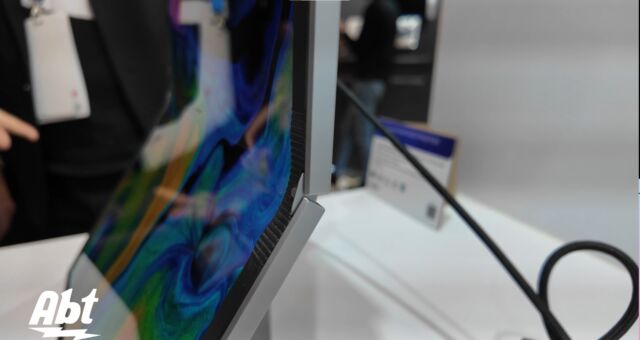
Like with any other foldable, though, durability remains a concern. A portable monitor may be moved around frequently, and Ars has seen firsthand how fragile a foldable screen can be, including with those small-gap designs.
Speaking of different viewing angles and visibility outdoors (and in bright rooms), the use of OLED suggests that this monitor won’t be as bright as some LCD portable monitors. That could limit visibility, depending on your use case. Asus hasn’t shared a brightness spec for the ZenScreen Fold.
Asus’ foldable monitor
A company spokesperson told Ars that the monitor will have two USB 3.2 Type-C ports, a mini HDMI 2.0 port, and a headphone jack. There is also an integrated gyroscope to help the monitor quickly adapt to different orientations.
The monitor can be powered by a USB-C attached laptop or power bank, but Asus didn’t share more information about how much power it will gobble up. OLED tends to be power-hungry, which is another reason people might not want it in a portable monitor, but an OLED panel is needed for the product to bend.
Other specs of the first foldable-screen portable monitor include a 1/4-inch tripod socket on the back, which could help the display suit more workspaces. However, users would have to buy a separate stand, which may be a big ask considering the monitor’s expected four-figure price.
But that’s about it. Asus’ foldable monitor has no other landmark trick besides its foldable OLED to justify its high price. As expected, price premiums will continue to hold back the adoption of foldables.
Unfortunate pricing
Like the rest of the foldable landscape, the high cost of a foldable monitor makes it impractical for most consumers. I’m hopeful that a portable monitor—which has no computing power, storage needs, or even a battery—with a fold could eventually have a more digestible price than similarly flexible phones and computers. But that hope isn’t immediately rewarded with the ZenScreen.
Asus hasn’t finalized the price of its portable monitor, but a company rep told Ars that the monitor “will be around $2,000.” Compared to the $3,500 debut price of Asus’ first (and only) foldable laptop, the ZenBook 17 Fold OLED, you’re saving $1,500 on folding-screen technology.
But $2,000 is a hefty amount to pay for any monitor, let alone a portable one. The most expensive portable monitor on Asus’ website is $899. The most obvious reason for the $899 price is that the ProArt Display PA169CDV uses a smaller (15.6-inch) IPS panel. But with the strong viewing angles IPS is known for, that may not be a big drawback compared to OLED, depending on your use case.
Asus’ PA169CDV also has a resolution advantage (4K), plus it’s Pantone and Calman-certified for color accuracy and is a Wacom tablet. For those whose needs—or expectations, considering the monitor’s price—call for touch capability, note that the upcoming ZenScreen isn’t a touchscreen.
With a $2,000 monitor, you could get many more capabilities beyond a foldable’s most obvious advantages of size, portability, and, potentially, OLED image quality. If you’re interested in new form factors for portable screens, for much cheaper than a foldable, you could explore one that attaches two screens to the left and right side of your laptop screen or stacked portable monitors.
In fact, Asus seemingly expects users to view its foldable monitor as if it were “stacked” on top of a laptop screen by using a tripod:
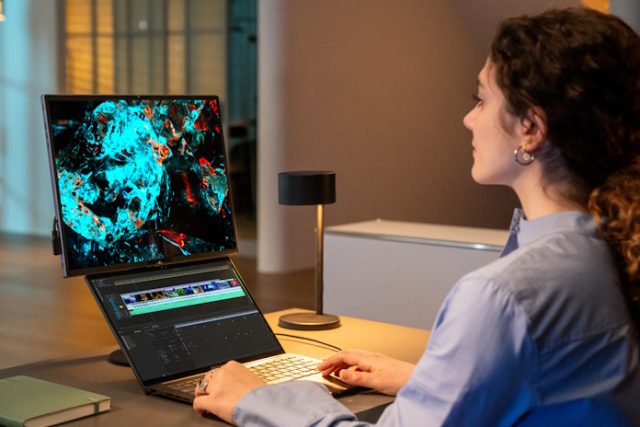
A foldable that almost makes sense
I’ve largely focused on foldable screens as a more sensible application for portable monitors, but there’s still the question of the general usefulness of foldable-screen devices. In my Lenovo Book Yoga 9i review, I called the laptop, which has two 13.3-inch OLED screens, “a threat to portable monitors everywhere.” The PC can also get a “stacked” look all on its own as a single device, for example. It doesn’t help foldable monitors’ case that the Yoga Book 9i starts at $2,000, which is around what Asus expects the Fold OLED to cost.
But while dual-screen laptops (Asus also announced one of these at CES) can be a sensible alternative to portable monitors, they don’t suit everyone. Plenty of people just want an extra screen that can connect to different devices in different locations—foldability can directly impact that need.
That said, I’m interested in seeing what value monitors could extract from a foldable OLED. I’m disappointed at the debut price estimate for Asus’ monitor but anticipate foldable portable monitors will become cheaper if they become popular.
While still carrying a premium, the trade-offs of foldable devices are things that I’m more willing to accept on a secondary screen, like a portable monitor, than on a primary device, like my phone or laptop.
With foldable prices remaining exorbitant, though, it would be prudent to wait for developments around foldable screen durability, like Gorilla Glass, as well as reviews and experiences from long-term users, before spending a lot on any type of device with a folding display.
Foldable OLED screens have their drawbacks. But if tech makers keep forcing the idea (a look at this year’s CES announcements suggests they are), I hope they further explore how bendy screens could apply to portable monitors with acceptable durability and pricing.
Asus expects to release its foldable monitor in Q2.
Listing image by Abt Electronics/YouTube